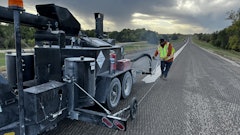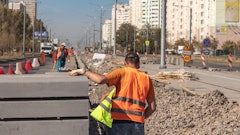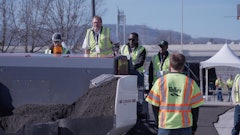
Last week in downtown Chicago, public works professionals from across the country converged at the McCormick Convention Center for the 2025 Public Works Expo (PWX). Every year this show houses products, equipment, and education for people who's job it is to manage the local infrastructure you use every day.
Whether that's in a large metro area like Los Angeles or the smallest municipalities, these are the folks trying to keep the roads paved and pot hole free. As you might imagine, that's not the easiest task. Here are some of the biggest topics I saw from talking to exhibitors and public employees.
Filling Gaps With Artificial Intelligence
Everyone seems to be facing a reality of doing more with less. That is as true in the private sector as it is in government, and is a worrying trend that has no apparent end in sight. Amidst those challenges, AI continues to be the slapped onto anything and everything, from dozers and graders to street sweepers and safety equipment.
There's almost an unspoken sense among companies that, if you don't have "AI" listed somewhere, then you might be perceived as lagging behind or not on the cutting edge of the industry. Media professionals like myself play somewhat of a role in this trend, because at the top of almost every journalists questions is: How are you utilizing artificial intelligence etc.? The unenviable truth is, though, there are lots of products that don't need the AI treatment.
By far, however, it was those who came to Chicago to show off their software platforms that were most invested in the AI of things. And while I'm not an expert in either AI or software development, there certainly appeared to be two categories or types of AI tech on display.
The first were those companies who seemed to have found deeply useful ways to integrate AI tools into their products, and could communicate not just its inclusion, but its implementation and functionality. This is really important to the world of public works, because of the sheer volume of assets they are required to manage and maintain. Whereas, in the private sector, a commercial property manager might have a handful of properties to keep track of, something they can personally
The three software platforms I spent time with at the show were Roadway Management Technologies (RMT), TerraGo, and (ironically, not related to the PAVE/X trade show) one called PaveX. Each of these programs offered public works employees and their municipalities different ways to utilize, integrate, and leverage geospatial information systems (GIS) to monitor their city's assets. This can include road signs, pavement markings, curbs, sidewalks, traffic lights, and so on. I was most interested in how they tracked Pavement Condition Index (PCI) and empowered their end-users to put this data to work, not just planning repairs or maintenance, but saving them time and money.
Each platform had at least one standout feature that caught my attention. TerraGo's platform is widely customizable in ways that make it extremely versatile. Nearly every single aspect, form-to-function, can be specially suited to meet a city's unique needs and situation.
"We customize every interface for each [client]," said David Basil, president and CEO at TerraGo. "We adapt to their terminology, their workflows."
From Basil's perspective, it's more about helping local governments and managers integrate and simplify how all their systems interact and talk to each other, not just another new systematic layer to add to the pile.
"We find between 5 and 10 different systems, in addition to paper and pen, and including Excel spreadsheets, many different moving parts. Our platform really sits in the middle and ties all that together," Basil said.
PaveX, though it doesn't have a proprietary management platform, it uses AI and specialized cameras mounted to vehicles, to capture highly detailed data (analyzed by AI) metrics for roads, including the depth of asphalt cracks, which can then be fed into a management platform. But, for my money, RMT seemed to have a package that puts a lot of the necessary elements together in the most broadly useful ways.
A Better Way To Track Assets?
Their system utilizes smart phones and simple windshield mounts to turn any vehicle into a survey vehicle. This means that anything from a trash truck, to a police cruiser can be turned into a pavement data machine. From the demonstration I watch, what happens on the back end with all that data is even more promising.
The integrated AI system automatically compares scans over time to model lifecycle prediction algorithms. So, not only is it telling you what the PCI of a given road is the day you scan it, but what will the PCI be at in 12 months or even 5 years? Since every road is different, with varying amounts of traffic and stress patterns, this would allow for better planning for city managers, giving them a way of know when an asset will reach a critical point in its maintenance life well in advance.
"There's no latency in the data," said Candler McCollum, CEO at RMT. "We can show you the actual amount of deterioration that happened across the network. But we're also actually building what we call a digital twin of each one of these roads."
What seemed quite impressive to me, as well as to some of the other public works' employees, however, was the built in collaborative features that it offers. These take the"digital twins" and shares the data about them with other localities using the platform too. One of the great benefits of this would be sharing hard data about one city's maintenance practices with others.
"It's true communal collaboration," said McCollum, "Oftentimes, an agency will have a bad experience with a particular contractor on a treatment that actually works great, so it gets shut down. What we have done by building this digital twin model is when you're looking at how a treatment is going to perform on a road network, we have clients across 18 states that have been populating this database."
The implication here is that city managers can not only look at the state of their roadways and the "degradation curve" based on the surface's history, but they can also pull from treatment data from other users in order to plan the most cost effective actions to take based on the real-world conditions for a given surface.
All of this sounds amazing, in theory, but, in practice, I still have some reservations about potential biasing and the need for a continued human presence to determine where work needs done.
Primarily, despite the power of such algorithms, a tool like this could accidentally preference roadways which are already prone to more traffic, due to the fact that city vehicles equipped with the monitoring setup might take similar routes, and, thus, avoid other areas which could potentially result in a compartmentalized location specific data-lag. When asked, RMT responded that these factors can be accounted for, but it's still something to keep in mind.





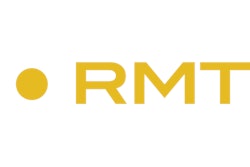
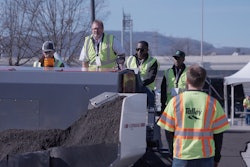
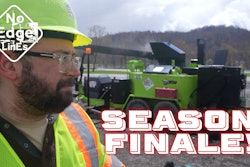


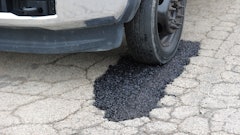




![Lee Boy Facility 2025 17 Use[16]](https://img.forconstructionpros.com/mindful/acbm/workspaces/default/uploads/2025/09/leeboy-facility-2025-17-use16.AbONDzEzbV.jpg?ar=16%3A9&auto=format%2Ccompress&fit=crop&h=135&q=70&w=240)



